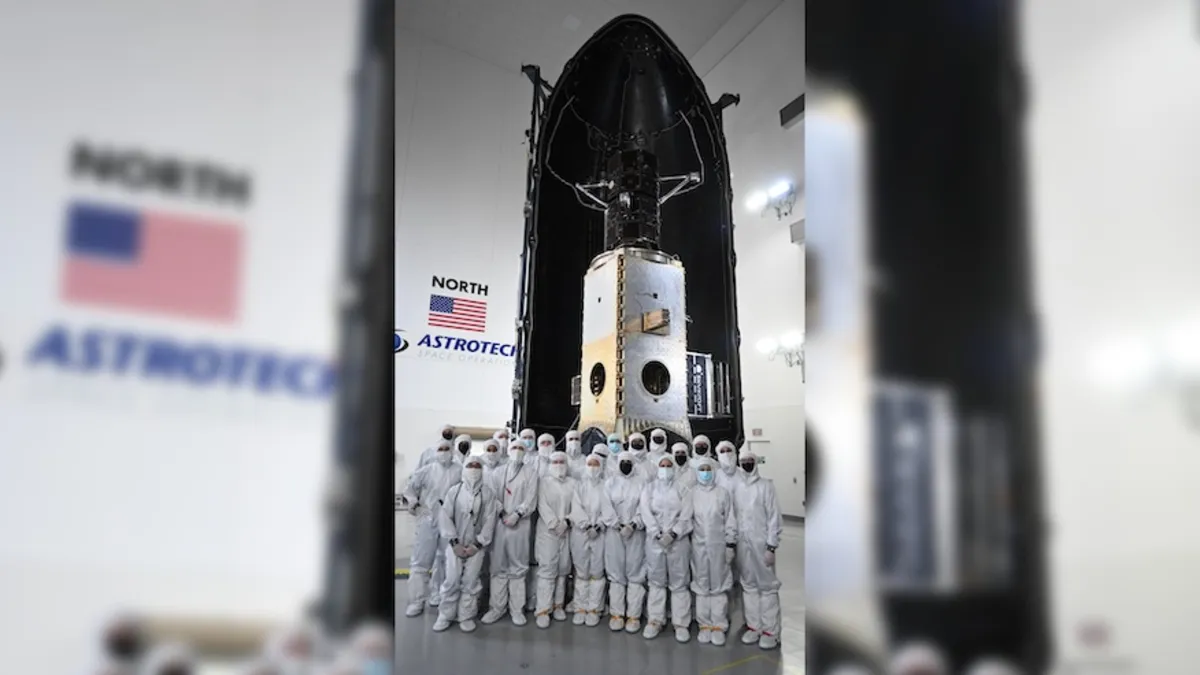
Update July 22, 2:30 p.m. EDT: The SpaceX launch director has officially aborted the mission, now rescheduled for Wednesday, July 23. NASA’s upcoming journey into space will feature a rideshare mission where nine other satellites will share a SpaceX Falcon 9 rocket. Unfortunately, this exciting launch must wait at least another day due to a last-minute scrub. Approximately 45 seconds prior to the planned liftoff, the SpaceX launch director called, “Hold, hold, hold,” officially declaring the mission aborted due to airspace concerns.
In a follow-up statement on social media, SpaceX emphasized that the launch could not proceed due to FAA airspace concerns that resulted in a no-go condition for the mission. The team is now targeting a new launch date for Wednesday. When the launch occurs, NASA’s twin Tandem Reconnection and Cusp Electrodynamics Reconnaissance Satellites, known as TRACERS, will be at the forefront of a mission aimed at studying the interaction between the solar wind and Earth’s magnetosphere.
The liftoff is now set for Wednesday, July 23, at 11:13 a.m. PDT (2:13 p.m. EDT, 1813 UTC), marking the start of a 57-minute launch window. Spaceflight Now will provide live coverage, beginning approximately 30 minutes before liftoff. SpaceX has confirmed that the Falcon 9 first stage booster, tail number B1081, will be utilized for this mission. This booster will be making its 16th flight; it previously supported missions including NASA’s Crew-7, CRS-29, and the PACE (Plankton, Aerosol, Cloud, ocean Ecosystem) spacecraft.
Approximately eight minutes post-liftoff, booster B1081 will aim for a landing at Landing Zone 4. If successful, this landing will mark the 27th occurrence at this site and the 478th booster landing overall for SpaceX. Residents near Vandenberg Space Force Base may experience a sonic boom as the booster descends through the atmosphere.
The TRACERS mission will deploy two identical satellites, T1 and T2, each measuring 37 inches (0.95 m) tall and 52 inches (1.32 m) wide, and weighing less than 440 pounds (200 kg) each. These satellites will orbit in a Sun-synchronous, low Earth orbit at an altitude of 367 miles (590 km). Their polar orbit will enable them to repeatedly pass through regions known as cusps, where Earth’s magnetic field opens above the North and South Poles.
NASA describes these funnel-shaped areas as critical for studying how particles interact with Earth’s atmosphere. “In these regions, Earth’s magnetic field dips toward the ground, funneling and concentrating particles into one part of our atmosphere,” NASA stated. By examining these areas, TRACERS will help scientists monitor how quickly the process of magnetic reconnection evolves, comparing data collected by both satellites.
Magnetic reconnection occurs when solar wind from the Sun penetrates Earth’s magnetosphere, contributing to phenomena like the Northern Lights, as well as potentially disruptive impacts like unplanned electrical currents in power grids and GPS disruptions. “Understanding these processes is crucial,” said David Miles, the TRACERS Principal Investigator at the University of Iowa.
TRACERS builds upon previous missions, such as TRICE (Twin Rockets to Investigate Cusp Electrodynamics)-2, which utilized sounding rockets launched in December 2018. With the advantage of a dual-satellite setup, TRACERS can provide closely spaced measurements, making it easier to analyze variations in plasma dynamics. “Each spacecraft will measure the local state of the plasma, including the electric field, magnetic field, and the ions and electrons,” Miles explained.
The TRACERS mission is part of NASA’s Small Explorers (SMEX) program and has a total mission cost of $170 million. The spacecraft were developed by Millennium Space Systems, a Boeing company, and the mission is led by the University of Iowa in collaboration with NASA’s Heliophysics Explorers Program Office. Each satellite is equipped with six advanced instruments, including:
ACE: Measures the electron portion of local plasma. ACI: Measures the ion portion of local plasma. MAG: A 3-axis fluxgate magnetometer measuring the background magnetic field. MSC: A 3-axis Magnetic Search Coil for high-frequency magnetic waves. MAGIC: A technology demonstration for new fluxgate magnetometer designs. MEB: The common Main Electronics Box for various instruments.Alongside the TRACERS satellites, the Falcon 9 rocket will carry nine additional payloads from three NASA-funded missions, one ESA mission, and one from an Australian company focusing on air traffic control from space. The NASA projects include the Athena EPIC (Economical Payload Integration Cost) SmallSat, the technology demonstration PExT (Polylingual Experimental Terminal), and the REAL (Relativistic Electron Atmospheric Loss) CubeSat.
The Athena EPIC mission, budgeted at $15 million, was initiated in response to a challenge from NASA’s Langley Research Center. It features a spacecraft using a Hyper-Integrated Satlet (HISat) architecture, allowing for efficient resource sharing across multiple payloads. The PExT mission, with a life cycle cost of $20 million, is set to demonstrate advanced communication capabilities across various networks.
Finally, the REAL CubeSat, built by Montana State University, carries a miniaturized Energetic Particle Sensor (ECP) payload designed to study particles in Earth’s radiation belts and their implications for space weather and satellite safety.
The Falcon 9 rocket will also deploy two significant missions: LIDE (Direct Access Live Demonstration) and Skykraft 4. LIDE is a 12U CubeSat developed to demonstrate 5G broadband access via SmallSats, while Skykraft will launch five spacecraft aimed at establishing a system for space-based Air Traffic Management (ATM) services.
These missions are pivotal for advancing telecommunications and air traffic management capabilities, promising to enhance connectivity and reliability for users on Earth and beyond.